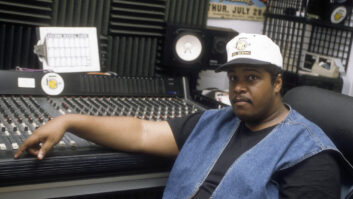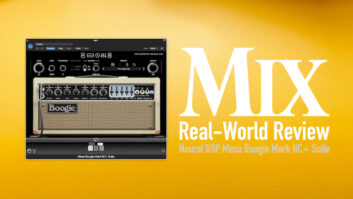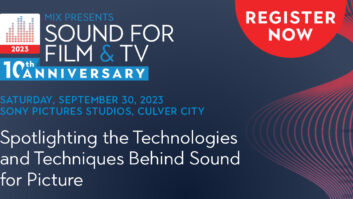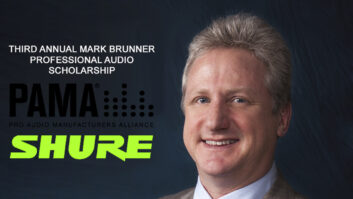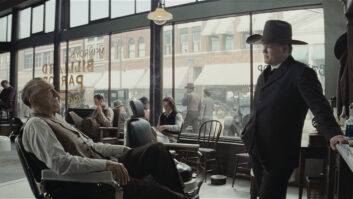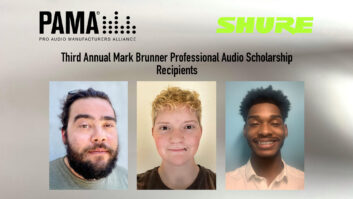As a trained percussionist and son of a jazz musician, Mark Ulano takes a musical approach to recording. But unlike typical recording engineers, his environment is a motion picture set, not a traditional studio. “The director is the conductor, the script is the music and I’m like the drummer,” he says.
The president of Los Angeles-based Ulano Sound Services Inc. has recorded sound for film since 1976, building a list of credits that includes Kill Bill volumes one and two, Spy Kids, Stuart Little, Austin Powers: International Man of Mystery, Jackie Brown, Desperado, The Big Easy and many others. His contributions on blockbuster Titanic garnered an Academy Award, the Cinema Audio Society and Motion Picture Sound Editors awards for sound mixing.
Over the years, Ulano has seen the decline of the studio system, the move from staffed to freelance operators and the shift from analog to digital audio. “Sound mixers work with tools and techniques built around supporting a scene and the film through the vision of the director,” he explains. “You have to use the best tools that won’t interfere with the creative side, and digital audio has been a great consolidator. Since the advent of AVID, Pro Tools, BWV, WAVE, ST2 and other formats, production sound shifted from analog to digital to accommodate the post facilities using DAWs and non-linear editing systems. Post-production must create another universe around the bed that we lay down, so you need good source material. It’s silly to send material in real time that has to be reformatted.”
Among Ulano’s favorite digital tools are his recent acquisitions, a pair of Yamaha 01V96 mixers. “These boards have solved a lot of issues in one fell swoop,” he notes. “It’s enormously flexible. We’re dealing with more complexity, multi-tracking and communication issues in the field—who should hear what version of what mix, the number of available auxes, etc. Digital will meet any challenge, and makes things immediately possible. Bringing the 01V96 onboard has allowed us to centralize all our issues with recording devices and multiple media. We have used digital hard drive recorders for some time now, including a DiVA 489, Fostex PD6 and Aaton Cantar-X.”
The company carries a supply of Sanken, Schoeps, Neumann and Sennheiser mics for booms, a dynamic kit for music and source sounds, plus SonoTrim, Sanken and Countryman lavaliers and Audio Limited wireless body mics. “I started using the Audio Limited on the first Austin Powers, and am now wireless to the board almost 100 percent—both booms and body mics,” Ulano notes. “People used to say that was either brave or stupid.”
“Recorded dialog isn’t just a scratch for what will be dubbed in later,” he adds. “That’s a common myth. The goal is to preserve performances, not just capture references. My music background helps on so many levels, as I’m literally mixing on the set, not just getting sounds. You’re aiming for a mix that’s coherent, and have to think like the actors who are dealing with segmented action. Choices of levels, dynamics, mics, etc. must make the process seamless, even when recording in hostile environments. Sound should create the illusion of another reality and support the material, not dominate it, although each director has varying philosophies.
He adds, “[Robert] Altman doesn’t care about the naturalism of the sound, while Quentin [Tarantino] will go to great length to capture original performances. James [Cameron] runs ADR, or loops, on every single line before he’s done his mix, and then he’ll work backwards to use the tracks he originally shot and make a word-by-word assessment in the post-production stage. Some will only redo or correct things after the picture has been cut.”
The major factor in switching to the 01V96 was recallability. “If there’s a specific actor who has certain voice characteristics, or a piece of challenging wardrobe that requires a certain EQ, I can store that in a library, and even name it for that actor, scene, wardrobe etc. We’ll also save configurations. It’s just an enormous aid, because time is money, and shooting can’t be held up because you’re dialing-in settings. Sometimes we’ll double track a boom mix and radio mic mix, and sometimes music is recorded live. A recent project (HBO Special Projects’ Empire Falls starring Paul Newman, Ed Harris and others) had an eight-track ProTools situation, so we had the second 01V96 running the DigiDesign system for a simple 8-track live record and subsequent playback with overdub on camera. Generally, we don’t get too deep into the onboard effects, except for the gates and limiters. We’re conservative with EQ—it’s for matching, not correction, and overusing it can impose presumptive editorial decisions on a scene. “Monitoring with the 01V96 is great,” he says. “I monitor in the stereo environment, and it’s very inclusive. We run anywhere between four and 15 channels of wireless for different functions, plus multiple channels of monitoring to the various crews and the director.”
Ulano recently wrapped A Cinderella Story starring Hillary Duff, and is in production with The Wedding Crashers, which stars Owen Wilson, Vince Vaughn and Christopher Walken.
“We’re really at a point in time where technologies from divergent sources are coming together to mesh in a sensible way,” he says. “The most important thing is to avoid the idea that there’s only one way to do something and have fun.”
For more information, please go to www.yamaha.com/proaudio.
